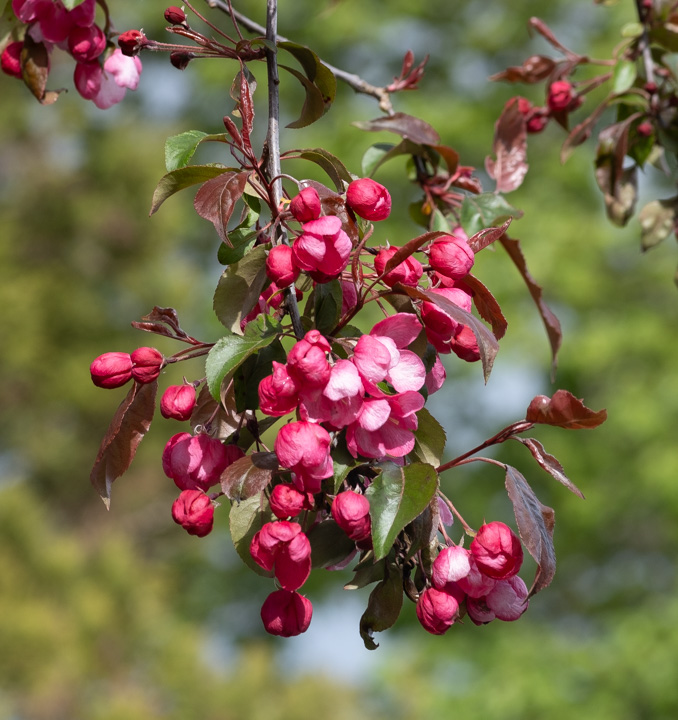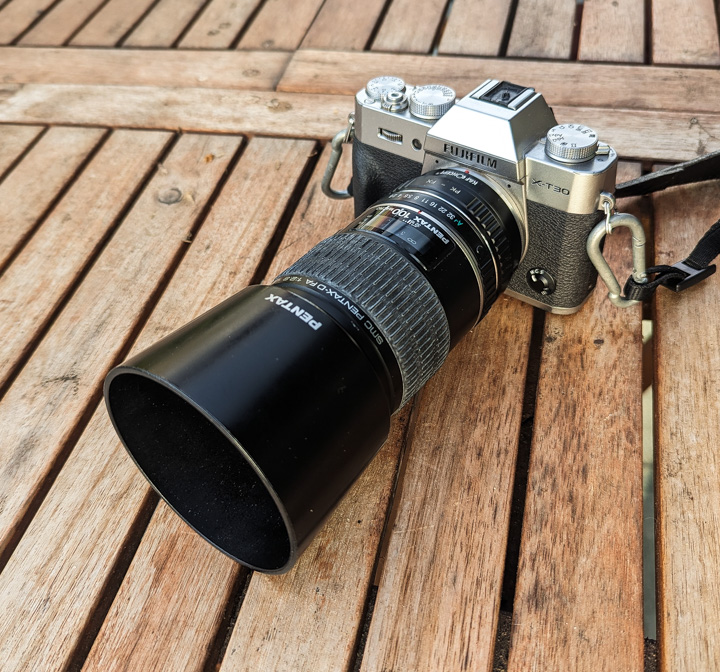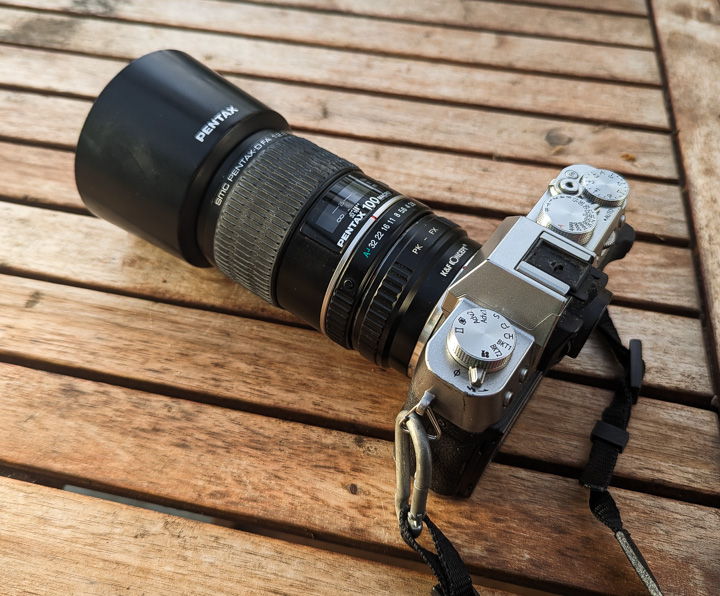
In March of 2004, just over twenty years ago, I published an ongoing piece entitled, like t 2024-4-30 03:0:0 Author: www.tbray.org(查看原文) 阅读量:9 收藏
In March of 2004, just over twenty years ago, I published an ongoing piece entitled, like this one, “Photointegrity”. The issue remains the same, but the rise of AI increases its importance and its difficulty. Here are words on the subject, illustrated by photos all of which have been processed with AI technology.
Tulip blossom, captured with twenty-year old analog technology, enhanced with AI.
There’s an amusing story about the technology behind these flower pictures, down at the bottom of this piece.
Back in 2004 · I was already using Photoshop but in fully-autodidactic mode, so I thought I should read a book about it, and selected one by Scott Kelby, “The Photoshop guy” back then and still active in the space, two decades later. It was a good book, but I was left wide-eyed and shocked: I’ll quote from that piece for those of you who don’t want to step back twenty years in time and read it:
Personal Improvement · In particular, Kelby walks through an astounding list of techniques for improving portraits, and I quote: removing blemishes, removing dark circles under the eyes, lessening freckles or facial acne, removing or lessening wrinkles, colorizing hair, whitening the eyes, making eyes that sparkle, enhancing eyebrows and eyelashes, glamour skin softening, transforming a frown into a smile, doing a digital nose job, slimming and trimming, removing love handles, and finally slimming buttocks, arms and thighs.
Integrity? · Screw it, integrity is history. The image is no longer the capture of a instant’s light and colour, it’s, well… whatever you and Photoshop make of it.
Photointegrity · I proposed a definition at the time: “what I’m going to do is strive to balance Truth and Beauty. In practical terms, this means the goal is make the picture look as much as possible like what I saw, as opposed to as good as possible.”
Simple yellow flower, captured with twenty-year old analog technology, enhanced with AI.
I can’t claim that I follow that strictly; most of the pictures in this space come out of the camera looking less pleasing than what I remember seeing, but I will confess that the version you see is often prettier than that memory. Usually, that results from the application of a bunch of Adobe technologies.
Is that OK? It’s a judgment call. Is there anything that isn’t a judgment call? Funny you should ask, because Adobe just announced the Firefly Generative AI 3 model, around which the next version of Photoshop is being built. Hitting those links and just scrolling through the pictures will give you a feeling for what this software will do.
Let me put a stake in the ground. I believe these things:
If you use generative tools to produce or modify your images, you have abandoned photointegrity.
That’s not always wrong. Sometimes you need an image of a space battle or a Triceratops family or whatever.
What is always wrong is using this stuff without disclosing it.
The C2PA angle · Last October, I wrote up C2PA, a useful digital watermarking technology that can be used to label images and video. That piece’s predictions look like they’re coming true; several manufacturers have announced C2PA support. I’m not going to take the space here to describe C2PA again.
I do note that Photoshop already supports C2PA and when it writes a watermark saying “Edited with Photoshop”, that label includes a very few words about what it did: cropping, levels adjustment, and so on; no details.
I believe strongly that when people use Adobe’s Firefly generative AI to create or augment pictures, Photoshop should by default turn C2PA labeling on, and disclose in the watermark whether it is fully-generated or just augmented. Sure, the person generating the image can always take that watermark out, but they can’t change its contents, and assuming C2PA becomes ubiquitous, the absence of a watermark would be reasonable grounds for suspicion.
Fruit tree blossoms, not open yet, captured with twenty-year old analog technology, enhanced with AI.
AI + photointegrity? · Over the last couple of years, the way I use Adobe Lightroom has changed a whole lot, and it’s mostly because of AI. Specifically, smart select. Lightroom now offers Select functions for Subject, Background, Sky, and Object. There’s also a very useful “Duplicate and invert” for any selection. I use these for almost every photo I take, especially Select Sky. The amount of light in the sky differs from that down here on the surface, and I’m pretty sure that our eyes compensate for that. Almost every picture looks more “real” when you select the sky and dial the brightness down (rarely: up) a touch, and maybe bump the contrast a bit.
This photo would have been a complete failure without those tools.
Allyson’s parents speak to the crowd at her memorial.
Recently we were at a memorial social for our recently-deceased friend Allyson. It was on a rooftop, on a bright grey day; the volume of light coming out of the sky was insane, and kept turning my photographic subjects into dark silhouettes.
The photo of Ally’s parents addressing the crowd is not great (her mom’s eyes are closed) but it at least captures a moment. The original was totally unusable, because the subjects are under a canopy and thus shaded, while the sky and cityscape and even mountains were reflecting harshly. So you select the subject, you invert and duplicate, you add light to the subject and subtract from the rest, and you get something that looks exactly like what I saw.
Of course, this depends on a good camera with a lot of dynamic range that can fish detail out of shadows.
I think this process retains photointegrity.
AI-enhanced analog · What happened was, the sun came out after the rain, everything is blooming this time of year, and I wanted to take pictures. I was rummaging for lenses and there was this dark shape at the back of the shelf. “What’s that?” I thought. It turned out to be an old Pentax with “Macro” in its name. Just the thing! Here’s what the combo looks like.
· · ·
By the way, one reason the Internet is still good is that random enthusiasts maintain obscure databases, for example of camera lenses, from whence this smc Pentax-D FA 100mm F/2.8 Macro, an alternate version of which rejoices in the name “Schneider-Kreuznach D-Xenon”. It seems to have been manufactured only around 2004. I wrote about buying it in 2011 and shooting flowers and dancers with it in 2014; lotsa groovy pix in both.
Anyhow, this lens does a fabulous job of isolating foreground and background. Given this to chew on, Lightroom’s AI gizmo does a fabulous job of selecting just the flower (or background). So it’s easy to sharpen the flower and fade the bokeh; the old lens and the bleeding-edge software were made for each other.
But I digress.
Photointegrity matters · It mattered in 2004 and it matters more every passing year as our level of trust in online discourse falls and the power of generative AI grows. We have the tools to help address this, but we need to think seriously, and use them when appropriate.
如有侵权请联系:admin#unsafe.sh





